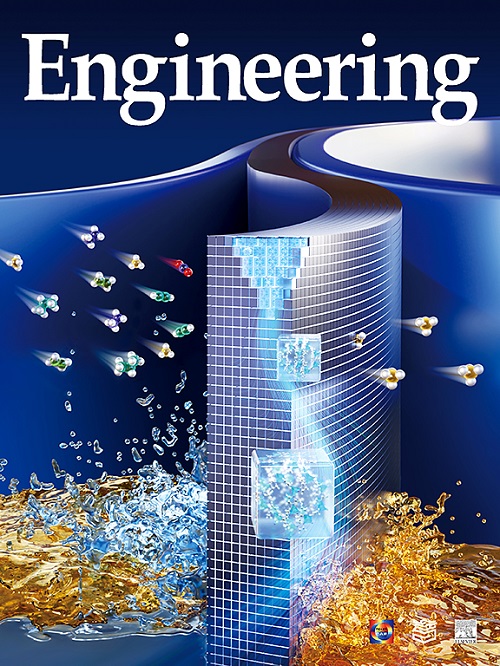Multiphase Reactive Flow During CO2 Storage in Sandstone
IF 10.1
1区 工程技术
Q1 ENGINEERING, MULTIDISCIPLINARY
引用次数: 0
Abstract
Geological CO2 storage is a promising strategy for reducing greenhouse gas emissions; however, its underlying multiphase reactive flow mechanisms remain poorly understood. We conducted steady-state imbibition relative permeability experiments on sandstone from a proposed storage site, complemented by in situ X-ray imaging and ex situ analyses using scanning electron microscopy (SEM) and energy-dispersive X-ray spectroscopy (EDS). Despite our use of a brine that was pre-equilibrated with CO2, there was a significant reduction in both CO2 relative permeability and absolute permeability during multiphase flow due to chemical reactions. This reduction was driven by decreased pore and throat sizes, diminished connectivity, and increased irregularity of pore and throat shapes, as revealed by in situ pore-scale imaging. Mineral dissolution, primarily of feldspar, albite, and calcite, along with precipitation resulting from feldspar-to-kaolinite transformation and fines migration, were identified as contributing factors through SEM–EDS analysis. This work provides a benchmark for storage in mineralogically complex sandstones, for which the impact of chemical reactions on multiphase flow properties has been measured.
砂岩中CO2储存过程中的多相反应流
地质封存二氧化碳是一种很有前途的减少温室气体排放的策略;然而,其潜在的多相反应流机制仍然知之甚少。我们对拟建储层的砂岩进行了稳态渗吸相对渗透率实验,并辅以原位x射线成像和扫描电子显微镜(SEM)和能量色散x射线光谱(EDS)的非原位分析。尽管我们使用了与二氧化碳预平衡的盐水,但由于化学反应,在多相流过程中,二氧化碳的相对渗透率和绝对渗透率都显著降低。原位孔隙尺度成像显示,这种减少是由于孔喉尺寸减小、连通性降低以及孔喉形状不规则性增加所致。通过SEM-EDS分析,矿物溶解(主要是长石、钠长石和方解石)以及长石向高岭石转化和细粒迁移产生的沉淀被确定为促成因素。这项工作为在矿物学上复杂的砂岩中储存提供了一个基准,为此测量了化学反应对多相流特性的影响。
本文章由计算机程序翻译,如有差异,请以英文原文为准。
求助全文
约1分钟内获得全文
求助全文
来源期刊

Engineering
Environmental Science-Environmental Engineering
自引率
1.60%
发文量
335
审稿时长
35 days
期刊介绍:
Engineering, an international open-access journal initiated by the Chinese Academy of Engineering (CAE) in 2015, serves as a distinguished platform for disseminating cutting-edge advancements in engineering R&D, sharing major research outputs, and highlighting key achievements worldwide. The journal's objectives encompass reporting progress in engineering science, fostering discussions on hot topics, addressing areas of interest, challenges, and prospects in engineering development, while considering human and environmental well-being and ethics in engineering. It aims to inspire breakthroughs and innovations with profound economic and social significance, propelling them to advanced international standards and transforming them into a new productive force. Ultimately, this endeavor seeks to bring about positive changes globally, benefit humanity, and shape a new future.
 求助内容:
求助内容: 应助结果提醒方式:
应助结果提醒方式:


